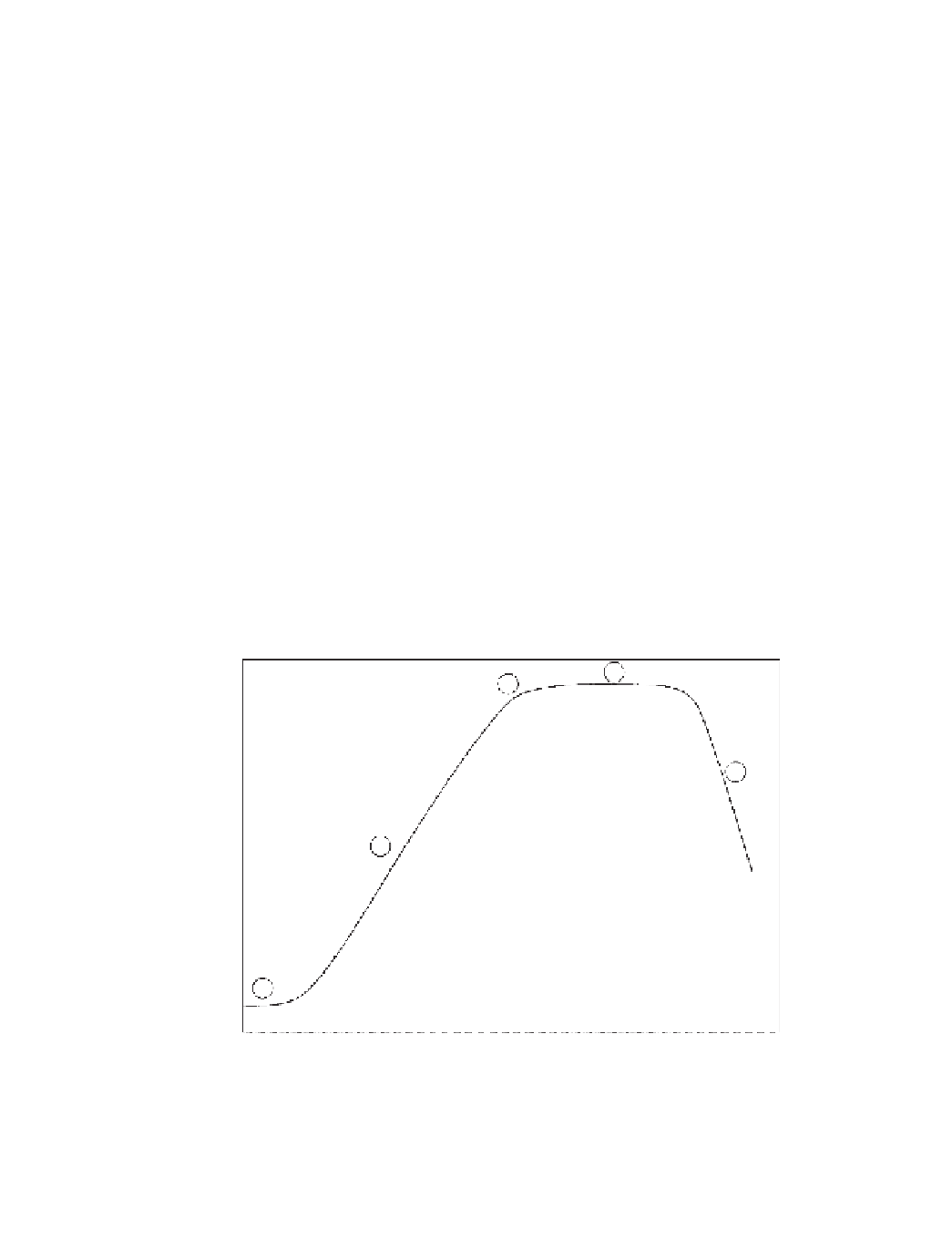Biomedical Engineering Reference
In-Depth Information
can be considerable biochemical diversity such that different strains of a single species can
have different properties. An understanding of microalgal biodiversity and the associated
effect on cellular properties is of great importance when selecting microalgae for
bioapplications. Selection at the species level may be a guide to potential, but there will be
variability between strains so testing and selection of individual strains will be essential.
9.3 CULTURED MICROALGAE
Microalgae can be cultivated (i.e. cultured) in the laboratory or in industrial or aquaculture
situations using aqueous media containing nutrients required for growth. Cultured
microalgae, in essence, behave rather like natural algal blooms that form when there are
good growth conditions (e.g. light, temperature, nutrient supply), but with the advantage
that conditions and growth systems can be controlled and optimised. Typical growth and
proliferation of microalgae in a batch culture is characterised by a lag phase, where there is
no increase in cell numbers, followed by an exponential or logarithmic phase of growth until
some growth factor becomes limiting (e.g. light or one or more nutrients) at which stage the
growth pattern changes to a phase of declining relative growth and then stationary phase,
followed by a death phase (Figure 9.2). The duration of a culture may be extended by using
semi-continuous or continuous culturing. In such cultures, fresh medium (nutrients and
water) are supplied, either intermittently (semi-continuous) or continuously, along with
removal of a matching amount of the culture. This prevents the culture becoming nutrient
limited, thus avoiding the stationary and death phases. More details on the principles of
continuous flow culture can be found elsewhere (Lee and Shen, 2004).
Autotrophic and heterotrophic microalgae have different growth requirements.
Autotrophic microalgae have an absolute requirement for light for photosynthesis and may
4
3
5
2
1
Age of culture
Figure 9.2
The characteristic pattern of growth shown by a unicellular microalga in a culture of limited
volume: (1) lag phase, (2) exponential phase, (3) phase of declining growth, (4) stationary phase, and
(5) death phase. (Adapted from Fogg, copyright 1965, by the Board of Regents of the University of
Wisconsin System. Reprinted by permission of The University of Wisconsin Press.)




Search WWH ::

Custom Search